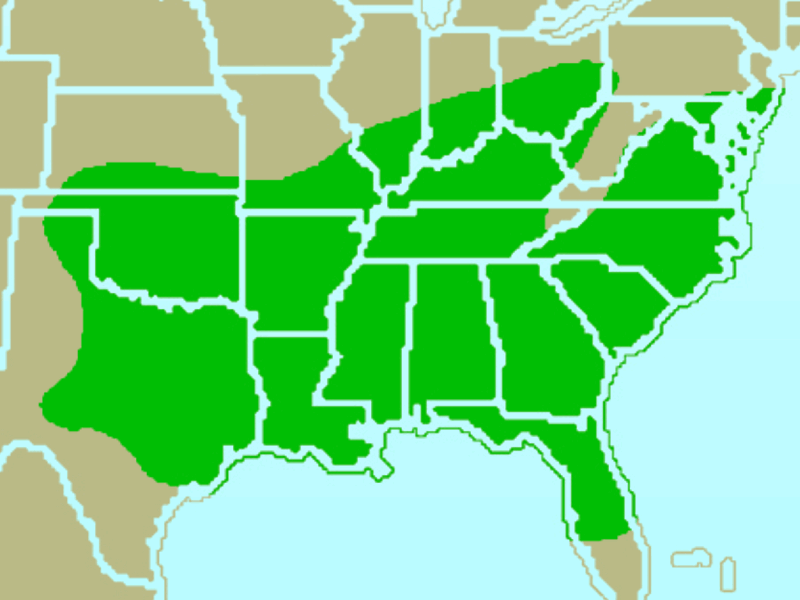- Carolina Chickadee
Taxobox
name = Carolina Chickadee

image_width = 260px
status= LC
status_system=iucn3.1
status_ref =IUCN 2007. 2007 IUCN Red List of Threatened Species.. Downloaded on 07 March 2008. ]
regnum =Animal ia
phylum = Chordata
classis = Aves
ordo = Passeriformes
familia = Paridae
genus = "Poecile "
species = "P. carolinensis"
binomial = "Poecile carolinensis"
binomial_authority = (Audubon, 1834)
synonyms = "Parus carolinensis"
range_
range_map_width = 260pxThe Carolina Chickadee, "Poecile carolinensis", is a small
songbird , apasserine bird in the tit family Paridae. Often, it is still placed in the genus "Parus" with most other tits, butmtDNA cytochrome "b" sequence data and morphology suggest that separating "Poecile" more adequately expresses these birds' relationships (Gill "et al.", 2005). TheAmerican Ornithologists' Union has been treating "Poecile" as distinct genus for some time already.Adults are 11.5–13 cm long with a weight of 9–12 g, and have a black cap and bib with white sides to the face. Their underparts are white with rusty brown on the flanks; their back is grey. They have a short dark bill, short wings and a moderately long tail. Very similar to the
Black-capped Chickadee , the Carolina Chickadee is best told from it by the slightly browner wing with the greater coverts brown (not whitish fringed) and the white fringing on the secondary feathers slightly less conspicuous; the tail is also slightly shorter and more square-ended. The calls and song also differ subtly to an experienced ear: the Carolina Chickadee's "chick-a-dee" call is faster and higher pitched than that of the Black-Capped Chickadee, and the Carolina chickadee has a four note "fee-bee-fee-bay" song, whereas the Black-capped omits the high notes. Identification is very difficult even with an excellent view.The most famous call is the familiar "chick-a-dee-dee-dee" which gave this bird its name and its song is fee-bee-fee-bay.
Their breeding habitat is mixed or
deciduous woods in theUnited States fromNew Jersey west to southernKansas and south toFlorida andTexas ; there is a gap in the range at high altitudes in theAppalachian Mountains where they are replaced by their otherwise more northern relative, the Black-capped Chickadee. They nest in a hole in a tree; the pair excavates the nest, using a natural cavity or sometimes an oldwoodpecker nest. They may interbreed with Black-capped Chickadees where the ranges overlap, which can make identification difficult.They are permanent residents, not usually moving south even in severe winter weather.
These birds hop along tree branches searching for food, sometimes hanging upside down or hovering; they may make short flights to catch insects in the air. Insects form a large part of their diet, especially in summer; seeds and berries become important in winter. They sometimes hammer seeds on a tree or shrub to open them; they also will store seeds for later use.
During the fall migration and winter, chickadees often flock together. Many other species of birds, including
titmice ,nuthatches , and warblers can often be found foraging in these flocks. Mixed flocks stay together because the chickadees call out whenever they find a good source of food. This calling out forms cohesion for the group, allowing the other birds to find food more efficiently.Carolina chickadees are able to lower their body temperatures to induce an intentional state of
hypothermia calledtorpor . They do this to conserve energy during extremely cold winters. In extremely cold weather conditions they look for cavities where they can hide in and spend up to fifteen hours at a time in torpor; during this time they are awake but unresponsive; they should not be picked up and handled at this time, as the stress of being held may cause their death.Carolina chickadees are so similar to black-capped chickadees that they themselves have trouble telling their species apart. Because of this they sometimes mate producing hybrids. The most obvious difference between the three chickadees is that the Carolina chickadee sings four-note song, black-capped ones sing two-note songs, and the hybrids sing three-note songs. [http://www.birdhouses101.com/carolina-chickadee.asp]
References
*Del Hoyo, J., Elliot, A., & Christie D. (eds). (2007). "
Handbook of the Birds of the World ". Volume 12: Picathartes to Tits and Chickadees. Lynx Edicions. ISBN 9788496553422
*Gill, F. B., Slikas, B., & Sheldon, F. H. (2005). Phylogeny of titmice (Paridae): II. Species relationships based on sequences of the mitochondrial cytochrome-"b" gene. "Auk" 122: 121-143. DOI: 10.1642/0004-8038(2005)122 [0121:POTPIS] 2.0.CO;2 [http://www.bioone.org/perlserv/?request=get-abstract&doi=10.1642%2F0004-8038%282005%29122%5B0121%3APOTPIS%5D2.0.CO%3B2 HTML abstract]tudy
Todd M Freeberg (2006)Social Complexity Can Drive Vocal Complexity: Group Size Influences Vocal Information in Carolina Chickadees.http://www.blackwell-synergy.com/doi/abs/10.1111/j.1467-9280.2006.01743.x
External links
*BirdHouses101.com; [http://www.birdhouses101.com/carolina-chickadee.asp Carolina Chickadee] . Retrieved 2006-NOV-21.
Wikimedia Foundation. 2010.
